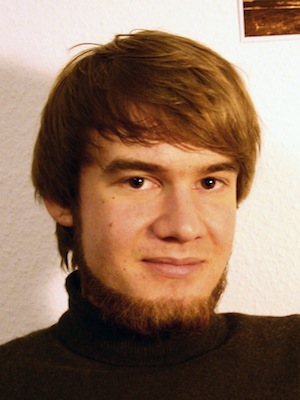| B. Sc. Sebastian Manz | |||||||
|
Publications(up to 2014)
-
Electromagnetically-induced-transparency control of single-atom motion in an optical cavity, Phys. Rev. A 89, 033404 (2014)arXivBibTeX ABSTRACT »
ABSTRACT »We demonstrate cooling of the motion of a single neutral atom confined by a dipole trap inside a high-finesse optical resonator. Cooling of the vibrational motion results from electromagnetically induced transparency (EIT)–like interference in an atomic lambda-type configuration, where one transition is strongly coupled to the cavity mode and the other is driven by an external control laser. Good qualitative agreement with the theoretical predictions is found for the explored parameter ranges. Further, we demonstrate EIT cooling of atoms in the dipole trap in free space, reaching the ground state of axial motion. By means of a direct comparison with the cooling inside the resonator, the role of the cavity becomes evident by an additional cooling resonance. These results pave the way towards a controlled interaction among atomic, photonic, and mechanical degrees of freedom.
-
Heterodyne spectroscopy with single atoms in a high-finesse optical cavity, (2012), MasterarbeitBibTeX ABSTRACT »
ABSTRACT »The present thesis is divided into three parts: Chapter one gives a brief theoretical introduction followed by a short description of the existing experimental setup. Subsequently, the implementation and characterization of the strongly focused dipole trap is presented. The chapter closes with an introduction of the heterodyne detection setup. Chapter two highlights theoretical aspects of heterodyne detection, emphasizing the estimation of the expected signal-to-noise ratio in comparison to the measurements. Finally, chapter three deals with heterodyne spectroscopy as a tool to map intracavity dynamics to frequency domain. At first a short theoretical introduction into cooling of the motional degree of freedom of a trapped atom in a cavity is given. First measurements of motional sidebands are presented and possible broadening mechanisms are discussed in detail. Eventually, the extracted temperature and cooling rate is compared to theoretical expectations.
Forschungsgebiete
Unsere Gruppe
Veröffentlichungen
Abgeschlossene Projekte
Lehre
Weitere Informationen
Anmeldung
Vorträge
- Curtius Lectures
- 03/05/22 - 06/05/22










